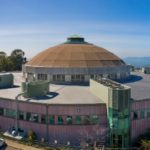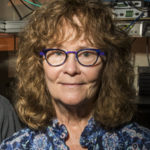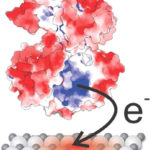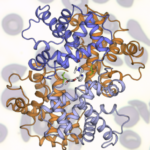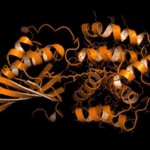The National Institutes of Health (NIH) has awarded $6.5 million to Berkeley Lab to integrate existing synchrotron structural biology resources to better serve researchers. The grant will establish a center based at the Lab’s Advanced Light Source (ALS) called ALS-ENABLE that will guide users through the most appropriate routes for answering their specific biological questions.
Carolyn Larabell to Receive Shirley Award at ALS User Meeting
Carolyn Larabell, a professor at the UC San Francisco School of Medicine and a faculty scientist in the Molecular Biophysics and Integrated Bioimaging (MBIB) Division at Berkeley Lab, has been selected by the Advanced Light Source (ALS) Users’ Executive Committee to receive the 2017 David A. Shirley Award for Outstanding Scientific Achievement. Larabell directs the National Center for X-Ray Tomography (NCXT) centered around ALS Beamline 2.1, the world’s first soft x-ray microscope for biological imaging, and she led the group responsible for its commissioning, design, and construction. Soft x-ray tomography makes it possible to image intact biological cells in 3-D without structure-damaging preparation such as chemically fixing, dehydrating, and staining the specimens. On October 3, Larabell will give her award talk, entitled “The Expanding Universe of Cell Biology at the NCXT,” during the ALS User Meeting at Berkeley Lab. Read more in ALS News & Updates.
X-ray Footprinting Reveals Secrets of ‘Metal-Breathing’ Bacterium
A team of Berkeley Lab researchers conducted X-ray footprinting mass spectrometry (XFMS) experiments at the Lab’s Advanced Light Source (ALS) to pinpoint how a protein of the bacterium Shewanella oneidensis transfers electrons to a metal oxide substrate. The research was led by Caroline Ajo-Franklin, whose lab is part of the Molecular Foundry and who holds a secondary appointment in the Molecular Biophysics and Integrated Bioimaging (MBIB) division, in collaboration with Corie Ralston, also of MBIB. Tatsuya Fukushima, a former postdoc in Ajo-Franklin’s lab, and Sayan Gupta, a member of Ralston’s lab, were co-first authors on the paper published in the Journal of the American Chemical Society. The study, which identified an unexpectedly small and weak binding site, also benefitted from expertise and tools contributed by Joint BioEnergy Institute (JBEI) and Biological Systems and Engineering (BSE) researchers Christopher Petzold and Leanne Jade Chan. Read more at the Berkeley Lab News Center.
Bay Area Biopharma Company Uses ALS to Tackle Sickle Cell Disease
The protein crystallography capabilities at the Advanced Light Source’s (ALS’s) Beamline 8.3.1 have been critical to Global Blood Therapeutics’ (GBT’s) ongoing effort to formulate a better treatment for sickle cell disease (SCD).
Novel Orange Carotenoid Proteins Shed Light on Evolution of Cyanobacteria Photoprotection
Research led by Cheryl Kerfeld, with members of her group in Berkeley Lab Biosciences’ Molecular Biophysics and Integrated Bioimaging (MBIB) Division, as well as her MSU-DOE Plant Research group at Michigan State University, has identified and characterized a new, functionally distinct member of the Orange Carotenoid Protein (OCP) family. The OCP complex enables chromatically acclimating blue-green algae to avoid cellular damage and growth inhibition in conditions of high light or nutrient stress.
Was this page useful?


